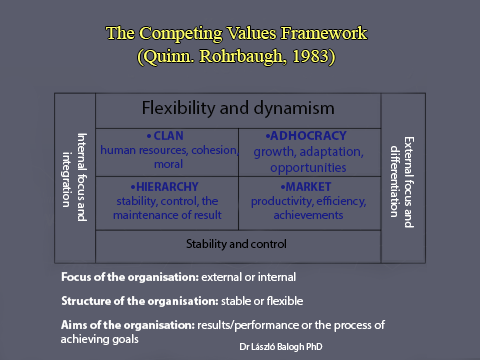The Competing Values Framework by Quinn and Rohrbaugh
According to Quinn, the dominant values of a community can be represented in a hierarchical order, structured into value dimensions. With the help of such lists or value maps, one is able to compare and describe the features of different organisational cultures.
The authors created a three-dimensional theoretical framework using multidimensional scaling for the analysis of organisational effectiveness:
- The attention of an organisation: inwards, within the organisation and/or outwards, towards the external environment
- Control within an organisation: some may prefer stability and control and/or others may support flexibility and changes
On the basis of such distinction, there are four main types of organisational cultures: the supportive clan, the innovation-oriented adhocracy, the rule-oriented hierarchy, and the goal-oriented market. Cameron and Freeman (1991) were the authors who originally distinguished the four types as clan, adhocracy, hierarchy, and market. The relationship between them is shown in Fig. 7. below.

Figure 7: The Competing Values Framework by Quinn and Rohrbaugh